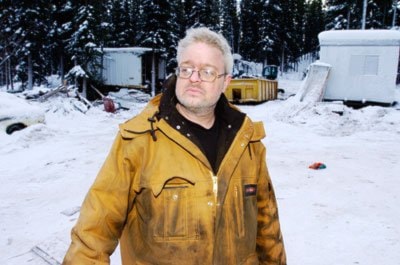DAWSON CITY
The building that houses Dawson’s new art school, which sits kitty-corner to Diamond Tooth Gertie’s, smells like fresh paint.
The walls and floors are clean now, but they won’t stay that way for long, said program administrator David Curtis.
Capping five years of hard work, the Klondike Institute of Arts and Culture officially opened its School of Visual Art earlier this month.
The school will offer a full first year of credits transferable toward a four-year bachelor’s degree at four colleges in Vancouver, Halifax, Toronto and Calgary.
The school was born from a partnership between Yukon College, the Dawson City Arts Society and the Tr’ondek Hwech’in First Nation.
Integrated into the coursework are references to the local Tr’ondek Hwech’in First Nation and other Canadian aboriginal cultures.
“Oftentimes it’s cultures that haven’t been traditionally included in foundation-year courses,” said Curtis.
Because of its unique mandate, most of the school’s curriculum was developed as the founders went along.
“The model doesn’t exist elsewhere, to the best of our knowledge, so most of it has been worked from the ground up,” said Curtis.
The coursework is divided into three disciplines — two-dimensional (painting and drawing) three-dimensional (sculpture and costume) and four-dimensional (video and performance) — plus two art history and two English courses.
The English will be taught in-house while the art history will be video-conferenced from the Ontario College of Art and Design.
“Another big part of the program is about environmental consciousness, so we’re trying to keep the level of toxicity down,” said Curtis.
“We’re encouraging students to use natural and biodegradable materials, or reuse things like packing materials.”
Paints and inks used at the school will be water-based, which eliminates the need for harsh chemical cleaners and high-tech ventilation systems.
The studios will use non-acid-based printmaking techniques such as intaglio and colligraph, and will house no darkroom on the premises.
All of the film and photography will be digital.
“A lot of schools are divesting themselves of darkroom techniques — it’s not dead but it will become a specialty for sure,” said Curtis.
“You lose a certain process and magic that comes out of developing your own work, but you gain in terms of immediacy and portability.”
Another benefit of ditching the darkroom is that there are fewer toxic fumes in the school’s shops and fewer toxic chemicals released into the local environment.
And as part of the program’s reduce-and-reuse philosophy, the school is also encouraging its students to scavenge through the local dump to gather materials.
“There will be a lot of work done with recycled materials because they have access to the dump here,” said Curtis.
“There’s going to be some growing pains and we’re going to learn things from year to year,” said instructor Charles Stankievech. Fresh from completing a three-year Masters degree at Concordia, Stankievech will teach 3- and 4-D courses at the fledgling program.
There is room for 20 students in the program’s inaugural year. So far 19 have signed on, with some others coming part-time and auditing classes.
Each student will be assigned a laptop computer, outfitted with all the software they’ll need to complete assignments, and a digital camera.
“So everybody starts on the same playing field,” said Curtis.
The school’s library boasts 1,700 titles. Most are new and specifically tailored to the school’s curriculum. The library will be open to the community, but those not enrolled in the school will not have take-out privileges.
“We don’t want this to be an ivory tower, we want it to be a place where the community feels welcome,” said Curtis.
And the school will encourage its students to go out and make art that interacts with the community.
“This place wouldn’t exist without the community support,” he said.
The program will also work to dispel some well-entrenched stereotypes about those who choose to paint and sculpt for a living.
There’s the artist as “bum,” the artist as “outsider” and the artist as “poor,” Stankievech rattled off a list of disparaging adjectives.
He sees them as “misnomers,” but “fun jokes.”
“It’s a total myth that arts can’t help with employment,” said Stankievech, who started in philosophy but often found himself applying for jobs requiring an arts degree.
“The reality is that out of the 20 students that we have, not many of them are going to go on to be professional artists,” said Stankievech.
“In some fields that might seem like a failure, but that’s not really what art is about,” he said.
“It’s the way we understand ourselves as social and creative beings — for me art is one of the most effective ways to bring that kind of consciousness to the foreground,” added Curtis.
